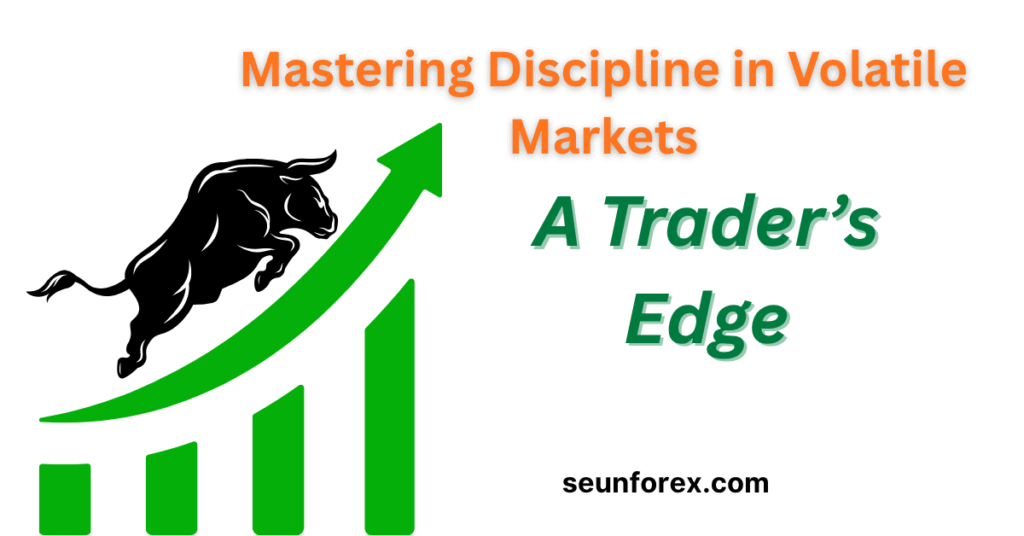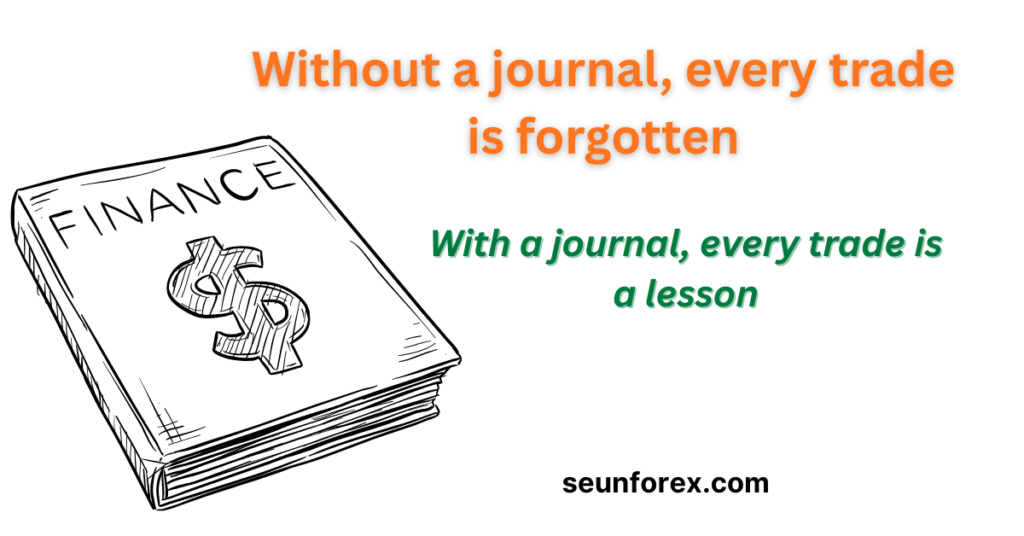
🧠 The Holy Grail of Trading Isn’t a Signal — It’s Your Journal
Discipline in volatile markets is the single most important edge a trader can develop. When price swings are sharp and uncertainty is high, emotions often take control. Trading discipline during volatility is what separates traders who survive and thrive from those who blow up their accounts.
The markets are noisy, chaotic, and often cruel. Prices swing, news breaks, and emotions run high. But here’s the truth: the difference between traders who thrive during volatility and those who fail has little to do with the perfect indicator or the latest signal.
The holy grail of trading isn’t a strategy — it’s your discipline, and the most effective tool to build that discipline is a trading journal.
Imagine if every losing trade came with an instant replay. A slow-motion breakdown of the exact moment your confidence turned into panic, or when your greed overpowered your rules. That replay is painful — but it’s also where your future profits are born.
As Jesse Livermore, one of the greatest traders in history, said:
“The examination of a losing trade is torturous but necessary to ensure that it will not happen again.”
This is why the journal, that simple sheet of data and notes, becomes the trader’s mirror. It exposes not the market — but yourself.
If you want to know how to stay disciplined when markets get volatile, it starts here.
🎯 Why a Trading Journal Beats Any Trading Tool
Trading platforms offer hundreds of tools — oscillators, moving averages, scanners, sentiment trackers. They’re all useful, but none of them can do what a journal does: hold you accountable.
Here’s why journaling is the ultimate discipline builder in volatile markets:
1. Self-Awareness Kills Bias
Most traders believe they follow their rules. But the journal shows otherwise. When you see in black and white that you keep moving stops, adding to losers, or chasing green candles — denial ends.
2. Pattern Recognition
The journal doesn’t just track setups. It tracks you. Maybe you lose money every Monday morning. Maybe you overtrade after a winning streak. Maybe you revenge trade after losses. These patterns only emerge when documented.
👉 In fact, I wrote a full guide here on why traders spiral after losses and how to stop it: How to Avoid Revenge Trading After a Loss in Forex.
3. Continuous Improvement
Elite traders don’t just improve their setups. They improve themselves. Your journal becomes a personal coach, showing where you self-sabotage and how to tighten your process.
As Brett Steenbarger explains:
“A journal keeps you constructive, keeps you learning, and keeps you working on the things that are most important.”
Still think this is “soft stuff”? Ask hedge fund managers running billions — almost all of them journal.
📒 Anatomy of a Great Trading Journal (Your Performance X-Ray)

A journal isn’t just notes. It’s a performance dashboard. Think of it like a Formula 1 pit stop — precise, structured, and designed for improvement. Let’s break it down.
🧩 1. The Basics (Every Trade Starts Here)
At the very least, log these:
- Date & Time: Helps you find patterns. Maybe mornings drain you, or maybe late-night trading is your edge.
- Ticker & Exchange: Track what markets treat you well (forex, indices, crypto).
- Idea Source: Was it Reddit? News? Your own setup? This filters good vs bad sources.
- Earnings Proximity: Did you trade around big events? Many traders get steamrolled by surprise announcements.
- Pattern: If you can’t name the pattern — you don’t have a trade.
🗺️ 2. The Plan (Pre-Market Clarity)
This is where discipline is forged — before you click buy or sell.
- Entry: Define exact price. Use conditional orders to avoid impulse.
- Stop Loss: Hard rule. If it’s not there, you’re gambling.
- Target: Minimum 2R, ideally 3R. Otherwise skip.
- Risk/Reward Ratio: Think in “R”, not in dollars. One R = your risk unit.
- Max Shares/Lots: Calculated from risk, not excitement.
As Dan Zanger says:
“Love your stops, not your stocks.”
📉 3. The Execution (Reality vs. Plan)
Markets test discipline. Execution shows truth.
- Realized Entry: Did you stick to plan or chase?
- Actual Position Size: Did fear make you size down, or greed size up?
- Price & PnL %: Record what really happened.
- Trailing Stops: Did you manage risk actively or emotionally?
- Heat (Stress Level): How much open risk were you carrying?
Example:
You buy 10 shares at $80. Stop = $75. Risk = $5.
Target = $95. That’s 3R.
Price runs to $100? That’s 4R. Smile, but stay calm.
🏁 4. The Exit(s) (Where Real Edge Hides)
Exits expose discipline.
- Partial exits: Did you scale out properly?
- Reasons for exit: Was it part of the plan, or fear/greed?
- Multiple exits: Document first, second, third scale outs.
The best traders exit with intention, not reaction.
🔍 5. The Review (Pain & Growth Zone)
This is where transformation happens.
- Status: Closed or open.
- Total R: Your scoreboard.
- Feedback: Emotional? Chased? Ignored news?
- Behavior Fix: One clear action to prevent repeat mistakes.
As traders say:
“You can’t out-discipline your psychology — but you can out-data it.”
📊 The Trader’s Dashboard: Monthly Stats That Matter
Discipline isn’t about feelings — it’s about numbers. Your monthly dashboard should include:
- Total Trades
- Win % (Batting Average)
- Average Win (in R)
- Average Loss (in R)
- Risk:Reward Ratio
- Expectancy = (Avg Win × Win%) – (Avg Loss × Loss%)
- Heat Exposure
- Adjusted R (after slippage & fees)
- Distribution Curve of Rs
If expectancy is negative, stop trading. Journal harder. Your patterns predict your future P&L.
As Ed Seykota said:
“If you can’t measure it, you probably can’t manage it.”
🧠 Final Thoughts: The Spreadsheet That Changed My Life

After logging trades for months, I realized my worst habits:
- Entering too early.
- Holding losers too long.
- Overtrading after losses.
The trading journal didn’t just show numbers. It revealed who I was in the market.
You don’t need expensive tools to build discipline in volatile markets. Start simple: Excel, Notion, Airtable — even paper. What matters is consistency. Too many metrics overwhelm. Too few miss patterns. Start lean, expand only if it helps you trade with clarity.
Key Takeaways on Trading Discipline:
- Journaling is the true holy grail of consistency.
- Plan every trade before entry, review carefully after exit.
- Focus on risk-to-reward multiples (R), not dollar amounts.
- Use data to uncover your emotional and psychological traps.
- Build the journal for yourself, not to impress anyone else.
In volatile markets, everyone chases the next indicator or prediction tool. But the real edge comes from trading discipline during volatility — and the journal is your weapon.
So, the next time someone asks for your “secret edge,” just open your spreadsheet and say:
👉 “I built it myself.”
❓ FAQs on Discipline in Volatile Markets
Q1: What is the biggest discipline mistake traders make in volatility?
The #1 mistake is abandoning stop-losses. Volatility triggers fear, and traders often widen or remove stops. That’s how small losses snowball into blown accounts.
Q2: How does journaling help in fast-moving markets?
Journaling slows you down. By forcing pre-trade planning and post-trade review, it reduces emotional reactions during chaotic volatility.
Q3: Can discipline really be trained?
Yes. Discipline is like a muscle. The more you practice rule-based trading and journaling, the stronger it becomes.
Q4: What if I hate writing journals?
Keep it simple. Use checkboxes, bullet points, or short notes. Journaling isn’t about essays — it’s about accuracy and consistency.
Q5: How do pro traders stay calm when markets swing violently?
They rely on process, not prediction. Clear rules and small risk per trade allow them to avoid emotional overwhelm.
Q6: Should I stop trading during extreme volatility?
Not always. Some traders thrive on volatility. But if it consistently triggers emotional mistakes, step aside. Protecting capital comes first.
Q7: What is the best journaling software?
Excel works perfectly. But tools like Notion, Edgewonk, and Tradervue are popular for detailed tracking. Choose one that fits your workflow.
Q8: How do I recover discipline after breaking my rules?
Pause and step back. Journal the mistake, reduce position size, and rebuild trust in yourself gradually.
Q9: Is discipline more important than strategy?
Yes. Even the best strategy fails without discipline. But strong discipline can make even a simple strategy profitable in volatile markets.
Q10: How do I know if my discipline is improving?
When your trades increasingly match your plan, your stop-losses are respected, and emotional mistakes reduce, you know your discipline in volatile markets is getting stronger.